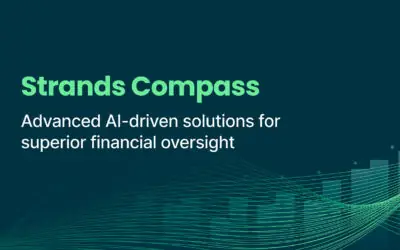Innovation is driving competition in finance, with the technology leaders in the industry leveraging the full benefits that cloud technology offers
Retail banks responded to the sudden and considerable customer service challenges that the pandemic created with excellence and efficiency. Many banks were quick to develop and execute fast customer migration to remote-based services, such as online and app-based banking. This development is so important for the banking industry because it shows what banks are truly capable of achieving technologically when they have to in response to market demands. The clear benefits of cloud computing for banks show how they can continue this impressive digital progress.
Innovation is driving competition in finance, with the technology leaders in the industry leveraging the full benefits that cloud technology offers. As a result, these organizations can take advantage of important benefits that cloud technology is uniquely capable of providing. Moreover, there are pressing risks in delaying a cloud migration.
While banks are, understandably, concerned about the security, control and compliance implications of transitioning to the cloud, the drawbacks and risks of neglecting to make the move are too great, and perhaps even present a long-term existential threat, given the massive inroads with digitalization that competitors are making.
The 4 benefits of cloud computing for banks
There are numerous unignorable ways that cloud technology can deliver superior operational and overall business performance for banks. Therefore, any bank should be knowledgeable of the main benefits of cloud computing to be able to take advantage of this powerful deployment and delivery model.
1. Much improved operational speed
Banks have the ability to capture and store enormous tranches of customer data on a daily basis. The problem is, that with legacy methods such as data storage silos, banks are severely limited in how they use and connect this data, if at all. Siloing is wholly inefficient and unfit for purpose for modern customer experience requirements. Furthermore, it impedes timely and precise regulatory reporting.
One of the main benefits of cloud computing is centralizing data capture, storage, and interpretation processes. It can also reduce the costs associated with these critical processes and generate far richer, more precise, faster data-led insights, which banks can use to drive performance.
2. Enhanced data security
Cloud service providers constantly and comprehensively analyze and review their products for any signs of security vulnerabilities and provide updates when and where necessary. Moreover, cloud technology is designed based on data and for a data-centric world. It is a modern and future-proofed solution for an increasingly digitized business landscape.
As a result, its security credentials have surpassed what on-site infrastructure can generally offer. Additionally, cloud security continues to advance rapidly, and it is a reasonable assumption to expect it to improve further with time.
3. An unprecedented level of customer insights
The modern banking industry is more competitive than ever before, with challenger banks and fintechs that specialize in specific financial verticals providing stiff competition to traditional financial institutions. This intensified level of competition – further enabled by open banking regulation such as PSD2 – has also forced traditional banks to raise their own game when it comes to competitiveness. As a result, banks face an unprecedented amount of competition, from other traditional banks and from the still-blooming alternative finance industry in the form of fintechs and challenger banks.
One of the key fundamentals powering this competition is the exponential growth of data and the use of cloud technology to generate granular, detailed, rich customer insights. Customers were already more demanding of the kind of financial service they expect before 2020, but the pandemic took it to another level. Simply, if banks don’t meet customer expectations, the customers – especially Generation Z and Millennials – will go elsewhere to a financial service provider that will.
In order to meet this demand, banks will need to use cloud-based, data-efficient service more, across their business. Proactive banks have already taken measures to identify manual and sub-optimal processes across their operations and business model, which cloud technology comfortably provides an upgrade on.
4. Markedly lower costs
By switching to cloud technology, the need for on-site infrastructure maintenance, security patch updates, and storage is removed. This means that banks either don’t require a team of employees to provide this specialist maintenance or they can redeploy such staff to concentrate on other urgent areas of business.
Another important factor that generates cost reduction is that cloud service provision scales or decreases as per a bank’s requirements. In this way, banks only pay for what they need.
The risks for banks of delaying cloud technology integration
As previously mentioned, banks are understandably hesitant to fully embrace the benefits of cloud computing due to a range of factors. It likely indicates complexity in adapting legacy systems to work with the cloud, or in some cases, having to replace legacy technology altogether. The cloud may still carry a feeling of risk for some banks too, due to its former reputation for presenting possible security risks. However, cloud security has come a long way, with it now widely regarded as the gold standard in data security.
Aside from these concerns, embracing any substantial new technology means that a change management process must be put in place, which is no easy feat. It requires sustained effort, careful planning, and strong execution. In short, launching a new technology is a considerable task for any organization, but for banks – typically large organizations – it is much more so. However, it is incumbent on banks to instigate such change.
The risks of delaying a mass infrastructural shift to the cloud are numerous. It allows competitors to improve their own operations and use the benefits that the cloud can bring, such as the ability to drive better customer engagement. Regulators are increasingly demanding digital capabilities, which is apparent in newer frameworks such as MiFiD II and PSD2. The cloud can make compliance more efficient and please regulators.
In cloud technology, banks can access the market benchmark in data security. Relying on legacy on-site infrastructure, even with security updates, may generate a heightened security risk. In addition to these possible risks, the cloud can enable banks to significantly drive their infrastructural and data processing costs down. The future of banking will very much be in the cloud. The question for banks now is, do they want to be cloud technology leaders or laggards?
4 reasons why Strands offers its Fintech suite as SaaS
Find out how Strands is taking its white-label financial management to the cloud and how you can take your digital banking services to the next level. If you are interested in finding out how Strands can help your bank, or if you would like to get a Free Demo of our AI-powered Financial Management solutions, please fill out this form and one of our Sales Reps will get back to you as soon as possible.



